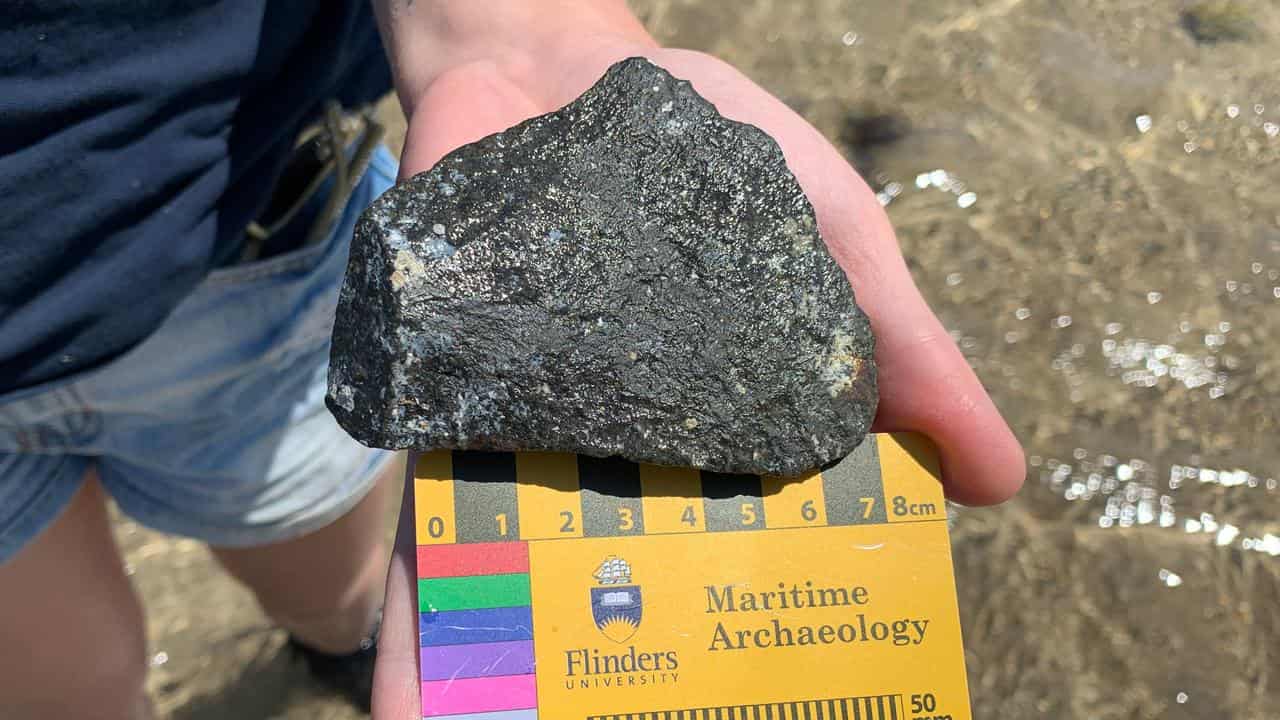
Ancient Aboriginal artefacts likely dumped in a freshwater spring thousands of years ago have been miraculously discovered under the sea off Western Australia.
The 9000-year-old cutting tools were located off Karratha in the Pilbara region by Flinders University archaeologists working alongside colleagues from the University of Western Australia and Murujuga Aboriginal Corporation last year.
Deputy chair of the corporation Vince Adams said he was overjoyed when the tools were found.
"Once we were given the (first) artefact by the diver and held it in our hand we knew straight away this belonged to our old people," Mr Adams said.
"We recognised it as something we still use today."
The tools have also been linked with Aboriginal rock art and archaeology, and create a more complete history of one of the world's oldest living cultures, Flinders University said on Tuesday.
The discoveries were made about 14 metres underwater at the site of the former freshwater spring, giving "deep time" insight into Aboriginal activities on what was once dry land, Deep History of Sea Country project lead researcher Jonathan Benjamin said.
The findings will be aired in documentary The First Inventors.
"The discovery of more and more artefacts establishing the submerged sites of Murujuga is of national importance and provides an opportunity to protect all types of underwater cultural heritage," Prof Benjamin said.
"Who knows how much irreplaceable heritage was thought lost before we discovered them through scientific diving?"
The discovery has revived calls to reform approaches to Indigenous underwater heritage, including nationalising protections for culturally important sites and boosting funding for dives.
"There is a lot of mob, especially in land and sea country areas, who are really interested in underwater archaeology - we have had people from Tasmania and as far as the Tiwi Islands asking about it," Mr Adams said.
"Rather than the current approach which provides blanket automatic protection to shipwrecks over 75 years old but requires ministerial approval to protect other types of archaeology, including Indigenous sites under water.
"We’ve confirmed the survivability of seabed archaeology, preserved for many thousands of years. The challenge now is to ensure submerged cultural sites survive into the future, given the pressure of modern impacts on our seabed and shores."









